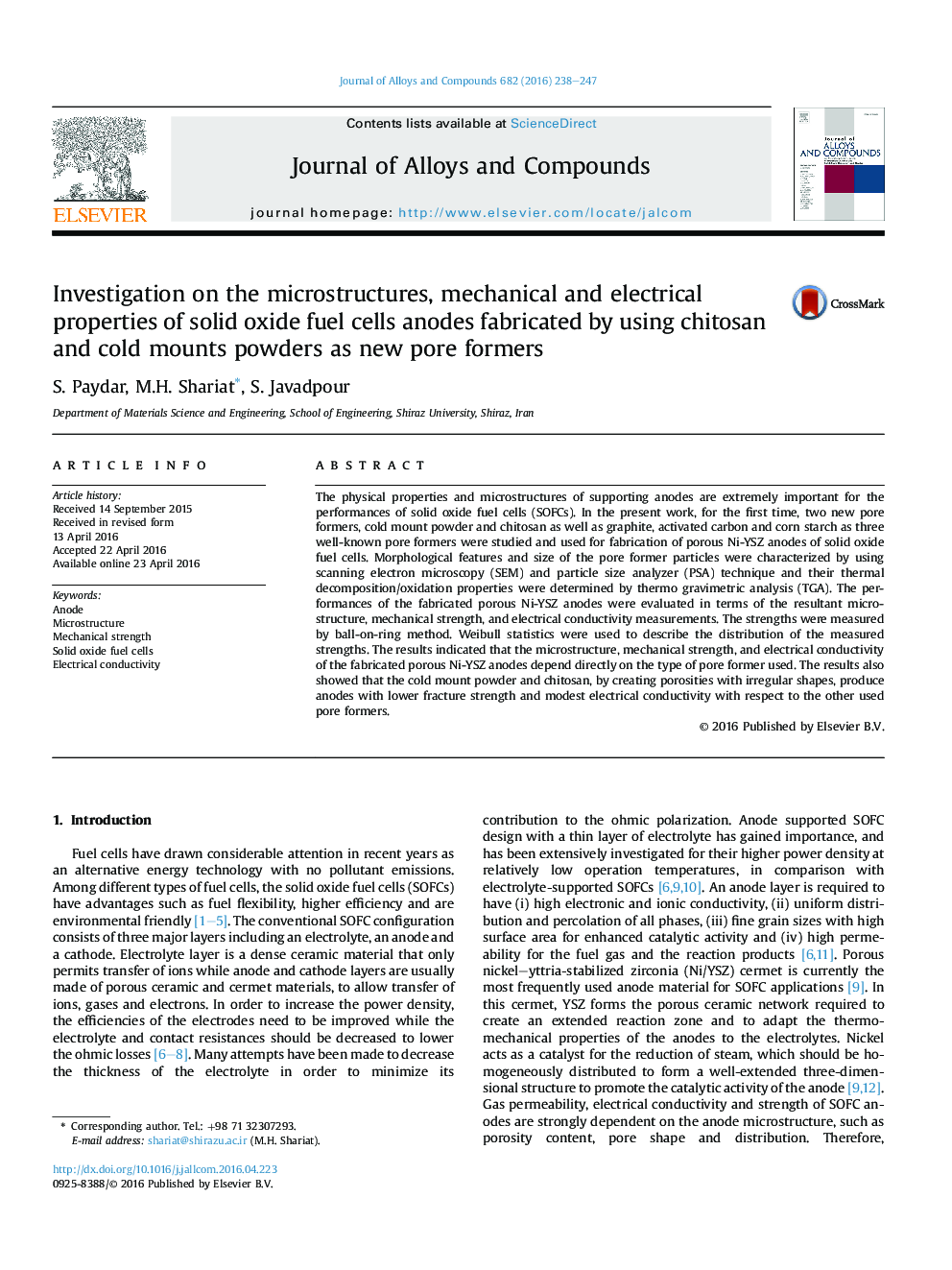| Article ID | Journal | Published Year | Pages | File Type |
|---|---|---|---|---|
| 7996932 | Journal of Alloys and Compounds | 2016 | 10 Pages |
Abstract
The physical properties and microstructures of supporting anodes are extremely important for the performances of solid oxide fuel cells (SOFCs). In the present work, for the first time, two new pore formers, cold mount powder and chitosan as well as graphite, activated carbon and corn starch as three well-known pore formers were studied and used for fabrication of porous Ni-YSZ anodes of solid oxide fuel cells. Morphological features and size of the pore former particles were characterized by using scanning electron microscopy (SEM) and particle size analyzer (PSA) technique and their thermal decomposition/oxidation properties were determined by thermo gravimetric analysis (TGA). The performances of the fabricated porous Ni-YSZ anodes were evaluated in terms of the resultant microstructure, mechanical strength, and electrical conductivity measurements. The strengths were measured by ball-on-ring method. Weibull statistics were used to describe the distribution of the measured strengths. The results indicated that the microstructure, mechanical strength, and electrical conductivity of the fabricated porous Ni-YSZ anodes depend directly on the type of pore former used. The results also showed that the cold mount powder and chitosan, by creating porosities with irregular shapes, produce anodes with lower fracture strength and modest electrical conductivity with respect to the other used pore formers.
Related Topics
Physical Sciences and Engineering
Materials Science
Metals and Alloys
Authors
S. Paydar, M.H. Shariat, S. Javadpour,
